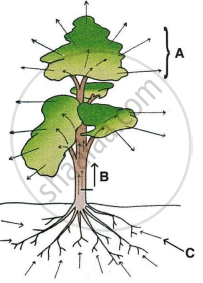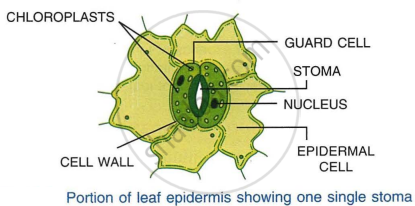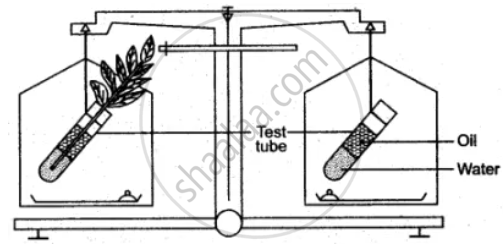Advertisements
Advertisements
प्रश्न
An outline sketch of a tree is shown in a diagram below. Study the same and answer the questions that follow:

- Name and define the phenomenon labelled A in the diagram.
- Write the significance of the process mentioned in A for the plants.
- What do the direction of the arrows in B and C indicate? Name the phenomena.
- Draw a neat and labelled diagram of an opened stomata.
उत्तर
- Transpiration, in plants, is the evaporative loss of water from aerial portions (leaves and stems).
- Significance of transpiration for the plants:
- Cooling effect
- Creating Suction force
- Distribution of water and minerals.
- Arrow B shows water rising up the trunk, and the phenomenon is lenticular transpiration in the ascent of sap.
Endosmosis is the phenomenon whereby arrow C denotes water absorbed by roots from the earth. 
संबंधित प्रश्न
Why are the stomata in most plants more numerous on the lower surface of a leaf instead of being on the upper surface?
Give Reasons for the following:
Balsam plants wilt during midday even if the soil is well watered.
Differentiate Between Cuticular and Lenticular transpiration.
Study the diagram given alongside and answer the questions that follow:

(i) Explain the physiological process of being study.
(ii) What will be the observations in the two test-tubes after about 2-3 days?
(iii) Give a reason for your answer in (ii) above.
(iv) Why is the surface of water covered with oil?
(v) State the purpose of setting up test tube B.
Mention, if the following statement is True or False. If false rewrite the wrong statement in its correct form:
Transpiration takes place only in green plants
Transpiration is significant for all except ______.
